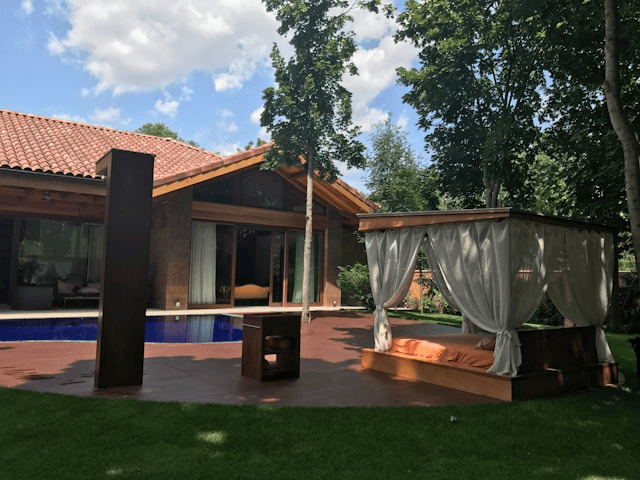As the temperatures rise, preparing your home for the summer heat becomes essential for comfort, safety, and energy savings. Whether you live in a region with dry heat or face humid summer days, taking proactive steps now can help you stay cool and reduce cooling costs all season long.
Here’s a comprehensive guide on how to get your home ready for summer heat.
1. Check and Maintain Your Cooling System
One of the most effective ways to keep your home cool is ensuring your air conditioning system is running efficiently. If you’re wondering how to keep house cool in summer without skyrocketing energy bills, start here:
-
Change or clean air filters every 1–2 months during peak use.
-
Schedule a professional HVAC tune-up to check for refrigerant leaks, test airflow, and inspect components.
-
Upgrade to a smart thermostat to better control indoor temperatures and optimize your energy use.
-
Consider an energy-efficient air conditioner if your current system is over 10 years old.
Regular maintenance not only improves performance but also extends the lifespan of your cooling system.
2. Seal and Insulate Your Home
Poor insulation and leaks can make cooling your home in hot weather much harder. Before summer hits, take these steps to keep cool air in and hot air out:
-
Inspect windows and doors for drafts. Use weather stripping or caulk to seal any gaps.
-
Add insulation to attics, basements, or crawlspaces to slow heat transfer.
-
Install insulated or energy-efficient windows, especially in sun-exposed areas.
Sealing air leaks and boosting insulation are essential energy-efficient home tips that also help reduce cooling costs.
3. Use Window Treatments for Sun Protection
Direct sunlight streaming through windows can quickly heat up your home. When preparing your home for summer, window coverings play a key role:
-
Install blackout curtains, thermal drapes, or cellular shades to block UV rays and reduce solar heat gain.
-
Apply reflective window film to deflect sunlight.
-
Use blinds or adjustable shutters to control how much light enters during the hottest parts of the day.
Combining indoor and outdoor sun-blocking techniques is one of the easiest ways to cool down your home naturally.
4. Improve Airflow and Ventilation
Good airflow is vital when cooling your home in hot weather. Without proper ventilation, even the best AC system can struggle. Try these strategies:
-
Run ceiling fans counterclockwise to push air downward and create a wind-chill effect.
-
Use bathroom and kitchen exhaust fans to remove hot, moist air.
-
Install attic vents or whole-house fans to release heat buildup in the upper levels of your home.
-
Open windows in the evening to let in cooler air when temperatures drop.
Proper ventilation not only helps in cooling but also keeps humidity levels in check.
5. Landscape for Shade and Cooling
Your yard can help cool your home if you use it wisely. Strategic landscaping not only boosts curb appeal but also reduces the heat absorbed by your home:
-
Plant shade trees on the south and west sides of your home to block harsh afternoon sun.
-
Install pergolas, trellises, or vines that provide natural shade over patios and windows.
-
Use light-colored gravel or reflective pavers to reduce heat absorption around your house.
Shaded outdoor areas also encourage you to spend more time outside in comfort.
6. Upgrade to Energy-Efficient Solutions
Investing in energy-efficient home tips pays off in comfort and long-term savings. As you prepare your home for summer, consider these upgrades:
-
Switch to LED lighting, which produces less heat than traditional bulbs.
-
Install Energy Star-rated appliances that consume less electricity.
-
Use smart plugs or power strips to eliminate phantom energy loads.
-
Install solar panels if your budget allows great for long-term energy savings and sustainability.
These upgrades not only improve your home’s performance but also increase its value.
7. Adopt Smart Cooling Habits
Cooling your home doesn’t always require expensive upgrades. A few smart, low-cost habits can make a noticeable difference:
-
Avoid using the oven or stove during the day. Grill outdoors or opt for no-cook meals.
-
Keep blinds and curtains closed during peak sunlight hours.
-
Unplug electronics that generate heat when not in use.
-
Run appliances like dishwashers and dryers at night to avoid adding indoor heat during the day.
-
Stay hydrated, wear light clothing, and use portable fans to stay personally cool.
Small changes in behavior can have a big impact on your comfort and energy bills.
8. Prepare for Heatwaves and Emergencies
Extreme heat can be dangerous, especially during power outages. Be ready with a few essentials:
-
Keep battery-powered fans and extra water bottles on hand.
-
Use blackout window coverings to block heat during an outage.
-
Know the locations of nearby cooling centers or public air-conditioned spaces.
-
Create a backup plan if you have vulnerable family members or pets.
Emergency preparedness is a crucial part of getting your home ready for summer heat.
Conclusion
Getting your home summer-ready isn’t just about staying cool it’s about making smart, energy-efficient choices that benefit your comfort and your wallet. From tuning up your air conditioning to sealing drafts, adding shade, and adopting heat-smart habits, there are many ways to beat the heat.










